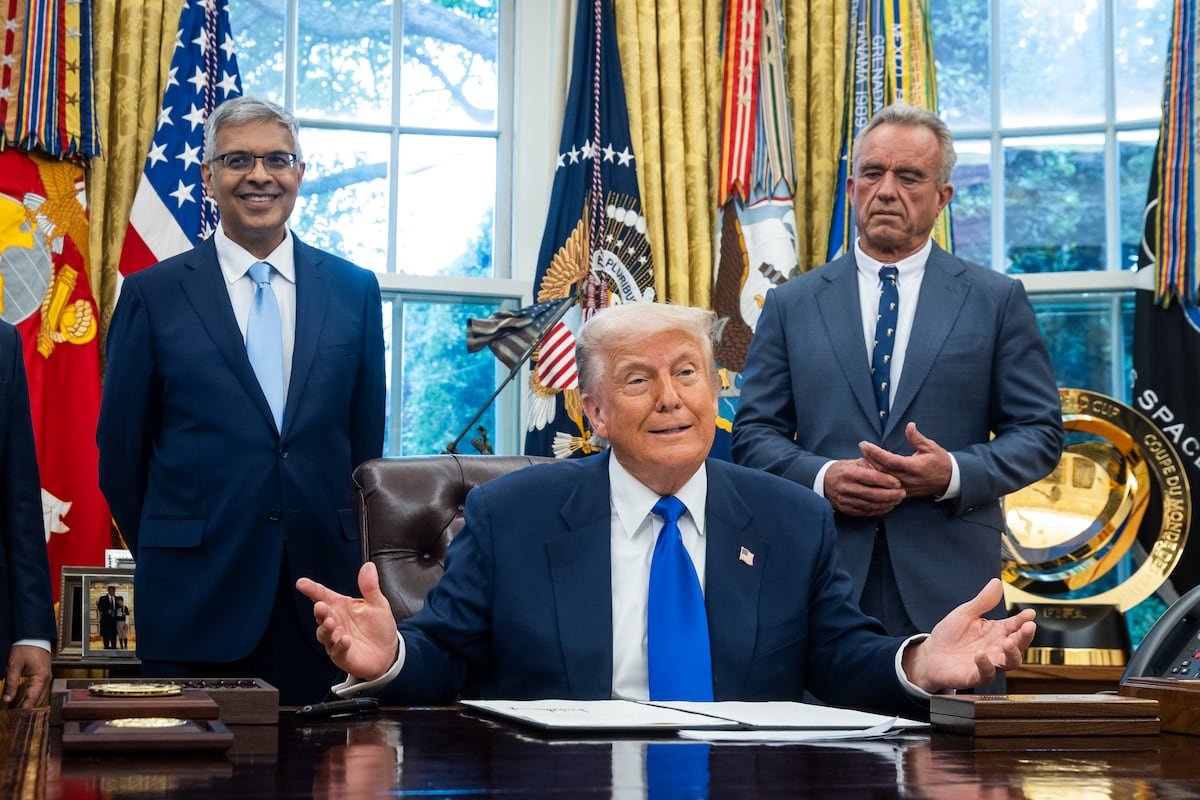The United States’ top biomedical research agency has halted payments to research groups abroad, jeopardizing multi-million-dollar research projects on cancer, viral infections, and human genetics around the world.
The National Institutes of Health (NIH), the largest public biomedical research organization, has frozen payments to research groups abroad until further notice. The agency’s leadership has cited a lack of transparency in how these funds are spent and even claims that this poses a threat to the country’s “national security.” There is currently no data on how many projects will be halted or how much money will be cut off to countries, although the figure could be around $500 million annually.
At the center of the controversy are past collaborations between NIH-funded universities in the United States and several Chinese institutions, including the Wuhan Virology Laboratory. According to an unconfirmed theory, favored by President Donald Trump, the coronavirus that caused the COVID-19 pandemic may have originated from this laboratory.
Jay Bhattacharya, the new NIH director appointed by Trump, has defended the new measure as part of the U.S. government’s planned cuts to science. The agency has said that from now on, foreign groups must sign a contract directly with the NIH, not as they did until now, with the research leader, who in many cases was a U.S. scientist. The measures affect dozens of multi-million-dollar projects in Europe, Asia, the Americas, and Africa. The agency hopes to clarify the new regulations before September. Until then, many research projects remain on hold.
“No one fully understands what’s happening,” confesses Javier Martínez-Picado, a virologist at the IrsiCaixa research center in Spain, who is one of those affected by the new measures. “In our case, we haven’t received confirmation that our project has been renewed, even though we passed the technical evaluation. We’re paralyzed,” explains Martínez-Picado, who collaborates with U.S. organizations on a project to study innate immunity to HIV infection, and another that examines HIV cures in patients who received stem cell transplants.
The scientist maintains that there is no lack of transparency in the spending of these funds. “For years we have fought for scientific research to be an international enterprise, one that isn’t isolated in one country. These regulations are backward and a setback. In reality, it’s a disregard for scientific research,” he warns.
There is total uncertainty. The impact may end up being just a change in bureaucratic rules, or it may mean the end of many research projects that are no longer of interest to the United States. The measure is also a blow to U.S. scientists, because if active projects cannot continue without having to send funds abroad, a way will be found to terminate them.
“It may be true that the NIH has little final control over these funds,” acknowledges Roderic Guigó, a researcher at the Center for Genomic Regulation in Barcelona. “But if the projects are ultimately not allowed to continue, it will be a disaster.”
Guigó has been receiving NIH funding since 2003, when he began as principal investigator of the Encode project, now called Gencode, the largest encyclopedia of elements present in the human genome. Since its inception, groups outside the United States have received tens of millions of euros to carry out part of the work. Currently, Guigó’s group receives approximately €1.3 million ($1.5 million) for its participation in phase four of the project. The big uncertainty now is whether the new rules will allow the launch of phase five, which is expected to last another four years.
The research cuts imposed by Donald Trump are opening Europe’s eyes. It’s a situation similar to the one with defense funding: Should Europe continue to stay out of major projects like Encode and rely on the United States to access and use those data? That is the question Guigó is asking, and he believes Europe as a bloc, and Spain in particular, should increase their participation in large consortia of this kind.
Computational biologist Marta Melé, a researcher at the Barcelona Supercomputing Center, has been receiving funding for the last year under the dGTEX program, with total funding of more than €35 million ($39 million). Her goal is to create the largest genetic and medical database for young children, a population for which there is much less data compared to adults.
“My group basically studies why each person is unique, and we also analyze whether health problems in adulthood can originate during the first years of life,” explains Melé. The researcher has secured funding for this year, but does not know what will happen in 2026. The greatest impact of the new regulations is that several jobs directly depend on U.S. funding. “These are very good people who will have to leave if funding is cut, it’s a huge loss of talent,” she explains. The scientist believes that governments should not only make plans to recruit scientists fleeing the United States, but also create “rescue measures” for researchers already in Spain.
The freezing of international collaborations is just a small part of the enormous cuts in scientific research, public health, and cooperation announced by the White House. The draft 2026 budget proposes cutting the National Institutes of Health budget by around 40%. The National Science Foundation, where Spaniard Darío Gil was appointed undersecretary for science and innovation in January, is in an even worse position, facing a proposed cut of 56%. The Centers for Disease Control, the agency responsible for monitoring epidemics and pandemics, is also set to lose nearly 50% of its funding. At the space agency NASA, the budget for manned space exploration will increase slightly, but a significant portion of the budget for science, climate change studies, science education, and other programs will be cut. NOAA, the main climate research agency, will see a 25% cut, and the Environmental Protection Agency, a 55% budget reduction.
Much of the money cut from science will go toward military spending — which Trump wants to increase by 13% to over $1 trillion — and border protection programs, for which he plans to spend some $175 billion.
The new budget will now have to pass through Congress for final approval. Although Republicans hold the majority in both chambers, senators from each state may be very reluctant to cut certain programs that are essential to their state’s economy.
Sign up for our weekly newsletter to get more English-language news coverage from EL PAÍS USA Edition











